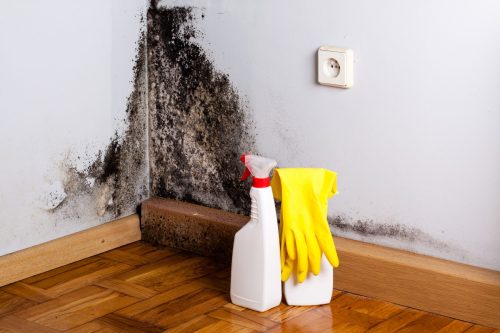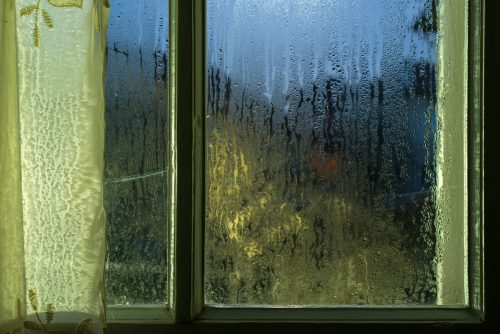Mould and damp are common problems in homes, especially when it is cold. Mould growth is most often the result of condensation, especially on cold surfaces like external walls. Sometimes it is caused by damp.
Condensation
The air always contains some moisture, and as air gets colder, it cannot hold all the moisture so tiny drops of water appear on cold surfaces – this is condensation. You can see it when a window or mirror mists over when you have a shower or are cooking. Less obvious condensation forms on cold surfaces where there is little air movement – for example behind furniture or home appliances – especially if they are against an outside wall.
Reduce condensation
Reducing condensation reduces the likelihood of mould forming in your home. To avoid condensation reduce the amount of moisture you produce.
- Close kitchen and bathroom doors when using them to reduce moisture in the rest of your home
- Put lids on pans when cooking
- Don’t leave the kettle boiling
- Dry washing outdoors on an airer or line if you can. If indoors dry it in the bathroom, with the door closed and window open or fan or in another room, with door closed and window open
- If you use a tumble drier, vent it on the outside
- Keeping your home warm reduces the likelihood of condensation forming
Ventilation
Ventilate your home without making draughts.
- Keep a window slightly open or a trickle ventilator open when someone is in the room – we produce moisture when we breathe
- Ventilate kitchens and bathrooms when in use by opening a window,or if you have an extractor fan, make sure it is running
- Where possible, position wardrobes and furniture against internal walls
- Leave space between the back of the wardrobes/cupboards and the wall
- Ventilate cupboards and wardrobes
- Avoid putting too many things in cupboards and wardrobes as this stops the air circulating.
Draught proofing
Draughtproofing will help keep your home warmer and also help reduce energy use.
- Windows and doors can be draughtproofed using stick on strips available from DIY stores
- Do not draughtproof bathroom and kitchen windows, where ventilation is needed to reduce condensation
Tackling mould

- Wipe down the affected area with a mould remover – there are many products available which are bleach based, so wear gloves and keep a window open when using them. You can also use a solution of half water, half white vinegar – leaving the vinegar to soak on the mould for about an hour before cleaning it off.
- Make sure to clean the area a metre away from where you can see mould as the spores spread
- The only way to prevent mould reoccurring is to prevent condensation
Damp
Mould can also be the result of damp. There are a number of causes of damp including leaking pipes, blocked gutters, leaking roof, leaks round windows and rising damp due to a defective damp course.
If you think you have a damp issue in your home contact the repairs team: [email protected]






